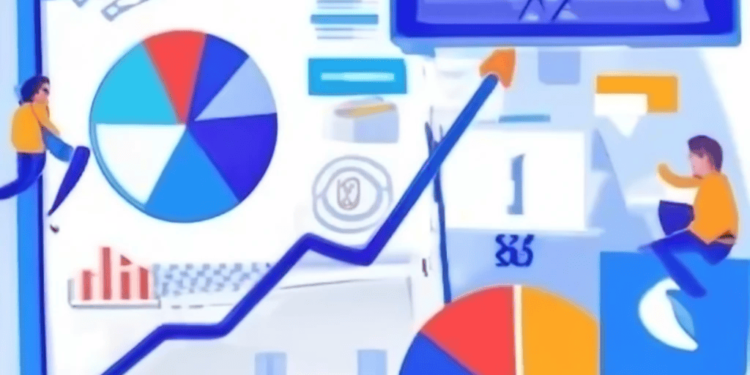The COVID-19 pandemic flipped the world upside down — and digital marketing was no exception.
Overnight, consumer behavior shifted. Offline businesses rushed online. Attention spans shrank, and screen time shot up. Some platforms exploded in popularity (hello, TikTok), while others faded into the background.
Now that we’re living in a post-pandemic world, one thing is crystal clear:
Digital marketing will never be the same.
In this blog, we’ll break down exactly how digital marketing has changed post-pandemic, and what your brand, business, or career needs to do to keep up.
🌍 1. Digital Became the Default
Before the pandemic, digital marketing was important. Now, it’s non-negotiable.
The pandemic fast-tracked digital adoption by at least 5 years, according to some experts. From Zoom meetings to online grocery shopping, everyone — from Gen Z to boomers — got a crash course in digital life.
What This Means for You:
- If your business still relies heavily on offline traffic, it’s time to rethink.
- Your digital presence (website, social media, ads, email) is now your first impression.
- Customers now expect seamless online experiences — even from local or small businesses.
Pro Tip: If you’re looking to upgrade your skills, enrolling in a Advanced Digital Marketing Course in Chandigarh can help you get hands-on training for this new landscape.
📲 2. Content Consumption Patterns Changed
Stuck at home, people binge-watched, doom-scrolled, and dove into online content like never before.
The result?
- Short-form video exploded (Reels, Shorts, TikTok)
- Live streaming became mainstream
- Audio content (podcasts, Clubhouse) gained ground
- Blogs, emails, and YouTube still stayed strong
But here’s the twist: Attention spans got shorter. Now, if you don’t hook your audience in the first 3 seconds — you’ve lost them.
What You Should Do:
- Focus on snackable content with quick takeaways
- Lead with value or entertainment in the first 5 seconds
- Repurpose content across multiple formats (1 video → Reels + blog + email)
📦 3. Ecommerce and D2C Brands Took Over
Ecommerce boomed during the pandemic. But it’s not just Amazon or Flipkart — Direct-to-Consumer (D2C) brands exploded.
Niche brands used performance marketing, UGC (user-generated content), and email funnels to bypass traditional retail and build loyal followings online.
Takeaway:
- You don’t need a retail store to build a successful brand
- Your website and digital funnel are now your primary sales channel
- Paid ads + great landing pages + email = the new conversion formula
🛠 4. Marketing Automation Became Essential
With leaner teams and uncertain times, businesses turned to automation tools to stay efficient.
Think:
- Email sequences
- Chatbots
- CRM integrations
- Auto-scheduling tools
- Retargeting ad flows
Automation helped brands stay active 24/7 — even when their staff was working from home (or not working at all).
Tools to Explore:
- ActiveCampaign / Mailchimp (email)
- Zapier (workflow automation)
- ManyChat (chatbots)
- Google Ads & Meta Ads retargeting
🧠 5. Empathy Became the New Marketing Language
Before 2020, marketing was often aggressive, loud, and product-first.
Post-pandemic? That doesn’t fly.
Audiences want brands that:
- Show empathy
- Support mental health
- Care about community
- Stand for something
The tone of content shifted from “Buy now!” to “We’re in this together.”
Your New Content Strategy:
- Lead with human stories
- Show behind-the-scenes realness
- Talk about values, not just products
- Focus on helping, not just selling
🧑💼 6. The Creator Economy Went Mainstream
Influencers used to be optional. Now, they’re integral to many digital campaigns.
During lockdowns, creators became trusted sources of info, entertainment, and product recommendations. Audiences trust people more than brands — and this changed how influencer marketing works.
What’s New:
- Micro-influencers (5k–50k followers) > celebrity endorsements
- UGC-style content > polished ads
- Long-term partnerships > one-off posts
You don’t need huge budgets — just the right creator with the right audience.
🔐 7. Privacy Changes Disrupted Paid Advertising
The post-pandemic era also saw massive data privacy shifts:
- Apple’s iOS 14 update limited tracking
- Google plans to phase out third-party cookies
- Users are demanding more control over their data
As a result, Facebook Ads, Google Ads, and performance marketers had to pivot hard.
What Smart Marketers Are Doing:
- Focusing on first-party data (email lists, CRM)
- Improving website conversion rates
- Using server-side tracking (like Meta’s Conversion API)
- Building trust through transparency
📚 8. The Rise of Online Learning and Upskilling
With so much change, marketers and business owners knew they had to adapt — fast.
Online courses, cohort-based programs, and live workshops exploded in popularity, especially in cities like Chandigarh, where digital careers are booming.
If you’re looking to level up your game, a Digital Marketing Course in Chandigarh is a great way to get practical, industry-relevant skills in SEO, social media, paid ads, automation, and more.
🚀 Final Thoughts: Adapt or Get Left Behind
The pandemic didn’t just change marketing — it accelerated the future.
To stay relevant now, brands and marketers need to:
- Stay agile
- Be human
- Create value-driven content
- Master new tools and platforms
- Prioritize user experience and empathy
The businesses that win in the post-pandemic era?
They’re not the biggest.
They’re the most adaptable.
Want to Future-Proof Your Digital Marketing Skills?
At Young Urban Project, our Advanced Digital Marketing Course in Chandigarh is designed to help you master the latest tools, platforms, and strategies that actually work today.
Perfect for entrepreneurs, students, and professionals looking to thrive in the new digital landscape.













